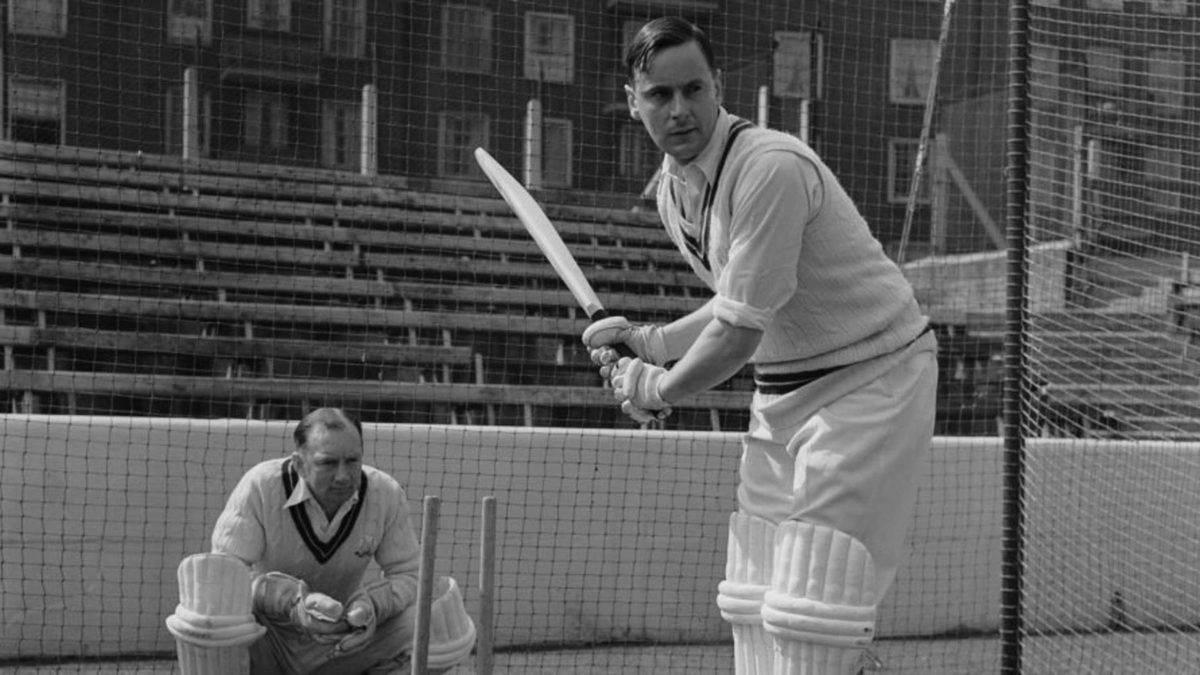
Peter May displayed his supreme batting abilities during the 1951 home summer, which included a debut Test hundred against South Africa at Headingley. He was named a Wisden Cricketer of the Year in 1952.
Peter May went on to become one of England’s finest batsmen ever, and scored 4,537 runs from 66 Tests at 46.77. In 388 first-class games, he aggregated 27,592 runs at 51
Schoolboy prodigies do not always justify predictions but, by the end of the 1951 season, Peter Barker Howard May at 21 had achieved sufficient to prove the judgment of those who several years before proclaimed him as the most promising batting prospect of English post-war cricket. Selection for the last two Tests against South Africa came as early recognition of May’s talents but, given the time to play regularly and with, at the least, normal maintenance of skill, he then looked to have touched only the fringe of the honours which might be his.
The county of Berkshire certainly can be proud of the feats of some of its cricketing sons who have migrated to first-class counties. That of HE Dollery earns for him similar recognition to May as one of the Five Cricketers of the Year; AV Bedser, of Surrey, followed his triumph of 30 Test wickets in Australia with the same number against South Africa, so making his aggregate (162) second among Englishmen to that of the illustrious SF Barnes (189). May, born at Reading on December 31, 1929, and also of Surrey allegiance, headed the first-class batting last season with 2,339, average 68.79, performances of special distinction being centuries on his first appearances for England and in the Gentlemen v. Players match at Lord’s. He easily topped the poll in the Cricket Writers’ Club vote for the best young cricketer of the year.
The story of May’s cricket ascent is that of a boy reared, as it were, with a ball in his hand or at his feet. The urge to kick or hit a ball came to him strongly at a very early age and, with youthful zest, he spent many hours doing so in the garden and on the hard tennis court at the back of his parents’ Reading house. He made no attempt at specialisation. All games provided enjoyment. Thus he acquired a ball-sense which became the foundation of all-round sporting ability.
In his most formative years, May could have wished for no better cricket stimulation than that given him by the former Berkshire and Sussex cricketer, RR Relf, a master at the Reading preparatory school which he attended, and G Geary (Leicestershire), cricket coach at Charterhouse. Geary, in particular, guided him in his approach to batsmanship, emphasising the importance of concentration and the necessity for keeping down the head. When these fundamentals were digested, May’s flair for timing a ball carried him ahead.
In his first year at Charterhouse, when 12, he played for the under sixteen colts; at 14 he gained promotion to the school senior team and finished first in the batting list. His 108 against Harrow was the one century hit for Charterhouse that season. In his next three years in the school eleven, the last as captain, May continued to compile big scores with style and regularity. At 15 he first played for Public Schools at Lord’s, and during holidays that year and the next received experience of bigger cricket in a few games for Berkshire. When 17 and in his last season at school he played an innings of 146 against Combined Services at Lord’s about which those who saw him spoke in the most glowing phrases. The power and placing of his strokes was shown by the inclusion of a six and 23 fours. His average for the season was 81.37.
For the next two years May served in the Royal Navy. At first, few cricket opportunities came to him but, on being moved to Chatham in 1949, he was picked regularly both for the Navy and for the Combined Services. In the first-class averages his season’s figures of 63.18 were surpassed only by Hardstaff and Hutton.
With service finished, May moved to Cambridge where next year, as a 20-year-old freshman, he hit 227 against Hampshire, he and MH Stevenson scoring 233 together in two hours five minutes, and he and JG Dewes adding 203. After the ‘Varsity match, in which he achieved nothing notable, May played for Surrey for whom he had been specially registered. He finished second in their averages and received his county cap.
Runs flowed from May’s bat still more freely in 1951 when he scored nine centuries, five in one peak period of nine innings which brought him 871 runs from July 18 to August 14. His scores then were: 119 not out, 24, 121, 29 not out, 138 (Test), 83, 167 and 103 not out (v. Essex), and 87. May subsequently lost some of his touch but there could never be any doubt about his class.
The century at Leeds with which May announced his Test entry could be cited as the embodiment of all his batting attributes. From first to last he treated every ball on merit and he was as composed at the start and on completion of 100 as at any time in his innings. His progress through the 90s typified May’s imperturbable temperament and he went from 98 to 106 with two glorious straight drives which sizzled to the boundary. Even then he did not succumb to the temptation of youth to celebrate with the spectacular. His control of the forward defensive stroke to spin bowlers showed that the deliberate study he had made of its execution by Hutton and D Compton had been far from wasted and, when the punishable ball arrived, he dispatched it elegantly with power and exact timing.
Plenty of good judges thought Peter May was England’s greatest post-war batsman, as was reflected in his Wisden obituary, published after his death on December 27, 1994.https://t.co/cVfWiXKdQw
— Wisden (@WisdenCricket) December 27, 2019
May, who is six feet tall, is specially adept in driving but he cannot be said to favour any one stroke. Whereas his back lift is not as straight as the purists would wish, the downswing cannot be criticised. That is much more vital. His games versatility was proved by his appointment as Cambridge captain for the 1951/52 winter season of both Association Football, at which he plays inside forward, and Fives.
Success has not touched him. He is genuinely modest. When a few hours after completing his Test century he walked into the almost empty lounge of Leeds hotel and saw a cricket writer to whom a colleague has asked him to give a message, he introduced himself in this way: “Excuse me, Mr. —-. May I introduce myself? My name is May.” His younger brother, JWH (19), has followed him in playing cricket for Charterhouse and Berkshire, and Peter thinks he has the ability to develop into a first-class cricketer.








